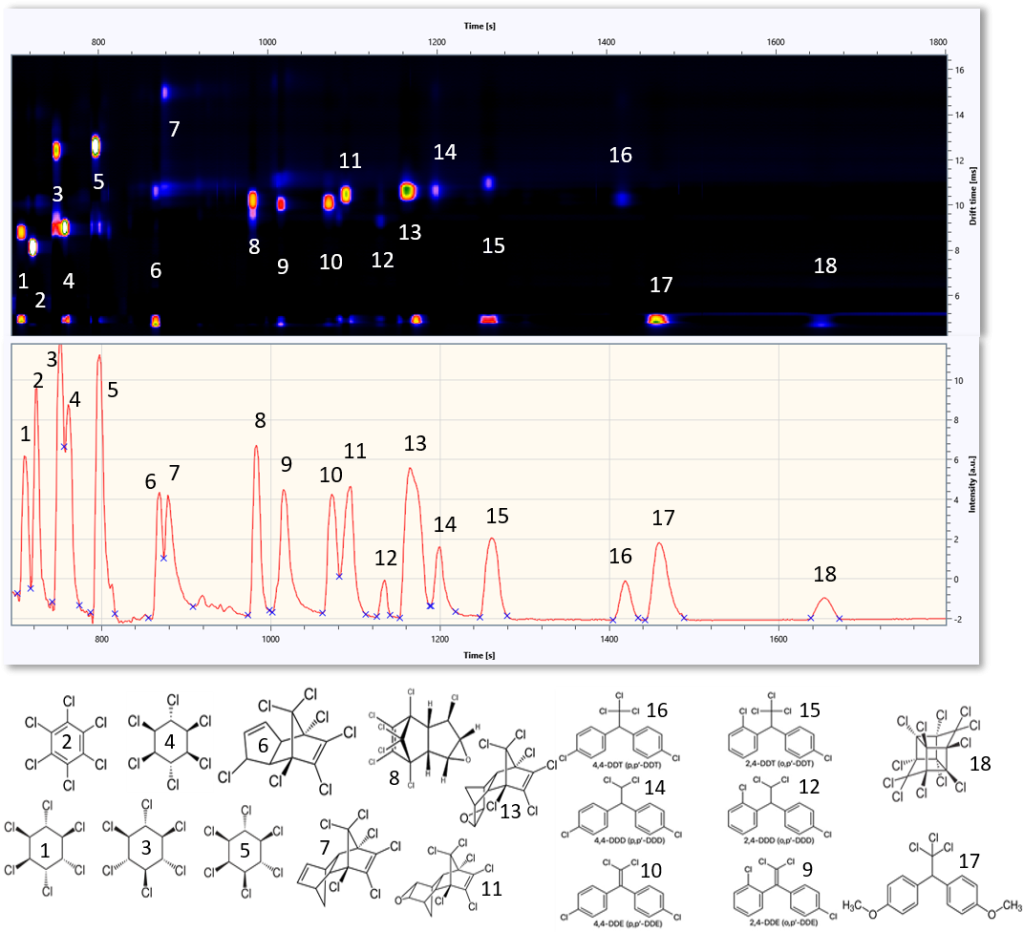Innovative Detection Technology
As a specialised company with more than 25 years of experience in the field of gas analysis, we offer certified gas measurement systems and sensors for various applications.
Current topics
GC-DTIMS 2030:
Qualitative und quantitative Analyse von schwerflüchtigen chlorhaltigen Pestiziden mittels GC-IMS


The innovative GC-DTIMS 2030 enables the fast and reliable detection of low volatile chlorinated pesticides. The analytical performance is demonstrated using a mixture of 18 active ingredients. The adjacent figure shows the clear identification of the individual components of the active substance mixture. Each substance can be reliably characterized on the basis of its specific retention time in the chromatogram and its drift times in the spectrum. Of particular importance are pentachlorophenol (PCP), lindane (HCH) and the various DDT isomers, which are relevant for waste wood analysis, for example.
Recent publications
A B S T R A C T
Qualitative and quantitative on-site detection methods for wood preservatives are of high value for the recycling industry and the occupational health and safety. Wood preservatives revealed as toxic to human and environment after decades of use. For the detection of contaminated wood and for processing of matured timber to particle boards a versatile detection method is needed. Especially historical wooden objects were treated with preservatives like pentachlorophenol, lindane or dichlorodiphenyltrichloroethane. This requires a non-destructive on-site detection method, that does not require specialized personnel. In this publication two methods are presented utilizing headspace sampling by solid-phase microextraction, subsequent separation using gas chromatography and detection by a drift tube ion mobility spectrometer (SPME–HS–GC-DTIMS). One method enables the quantitative detection of pentachlorophenol in wood flour and wood chips as they are used in wood processing industries. A limit of detection of 0.1 mg/kg was achieved using DIN 32645, which can be even more lowered. The second method enables non-destructive detection of pentachlorophenol, lindane, dichlorodiphenyltrichloroethane and other preservatives in wooden objects. Therefore, samples were prepared, which show a significantly lower concentration than typical treated objects, and used next to real samples for method validation. With the method contamination of the real samples and of the prepared samples of low concentration were proven.

